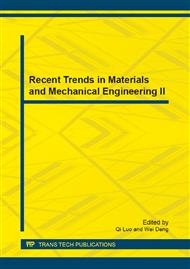p.250
p.254
p.259
p.263
p.269
p.276
p.281
p.291
p.298
Micro-Mechanical Analysis of Composites Reinforced with Discontinuous Fibers with Large Aspect Ratio
Abstract:
Properties of fiber composites reinforced with fibers greatly depend on the choice of fiber and matrix. Their mechanical properties and geometry influence the stress state in composite. In this paper the Method of Continuous Source Functions (MCSF) employing Trefftz Radial Basis Functions (TRBF) is presented. This method does not require any mesh. The focus will be given to the application of TRBF in form of dipoles to the simulation of composites reinforced with fibers of finite length with large aspect ratio. In presented example as well as in other linear problems, only nodes on the domain boundaries and a set of source functions in points outside the solution domain are necessary to satisfy the boundary conditions. Finally employing of MCSF for analysis of patch of glass fibers embedded in epoxy matrix subjected to far field stress is shown.
Info:
Periodical:
Pages:
269-275
Citation:
Online since:
September 2013
Authors:
Price:
Сopyright:
© 2013 Trans Tech Publications Ltd. All Rights Reserved
Share:
Citation:


